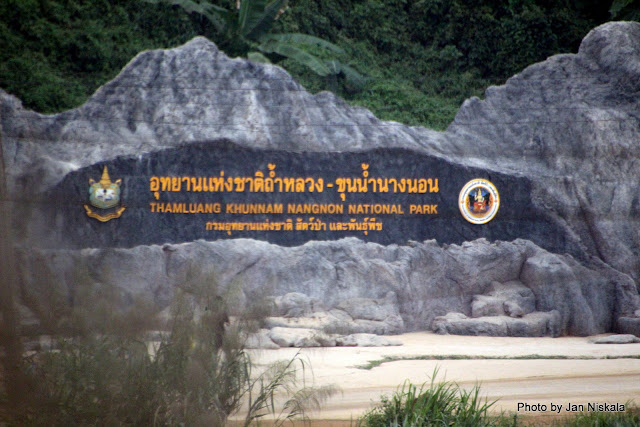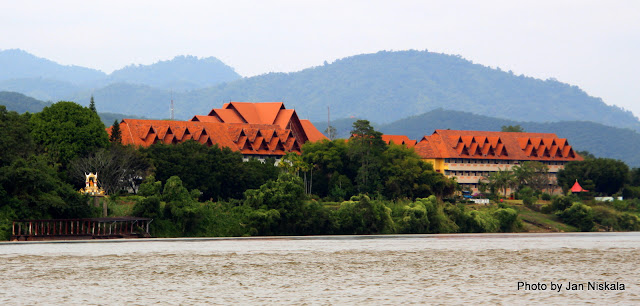Mae Sai Border Town
and
the Golden Triangle
We
stayed in Chiang Rai for two nights and again this hotel was lovely. We stayed in the Riverie by Katathani. The rooms were pretty normal, very nice but
normal. The outstanding part of this
hotel was the social areas and the view.
Have a look.





On
our way to the border town of Mae Sai located at the tip of Thailand, we pass by
the location of the cave where the boys’ soccer team and their coach were
trapped for several days. I’m sure you
remember the amazing rescue of all the young boys and their coach and the
unfortunate loss of one of the rescuers.
The cave itself is deep into the mountains and our bus, of course, could
not go there; however it’s interesting to note that the entire area has been
dedicated as the Thamluang Khunnam Nangnow National Park since December 18,
1974 and is now allowing tourist to actually trolley into the cave area for
tours inside the cave. I don’t know
about you guys but I want nothing to do with touring the inside of that
cave!!
Moving along our tour
guide made arrangements for us to tour into Myanmar. Myanmar
(formerly Burma) is a strict Military Dictatorship; it is not a communist country. Myanmar is the world's second
largest producer of illicit opium, after Afghanistan and has been a significant
cog in the transnational drug trade since World War II. According to the UNODC
it is estimated that in 2005 there was 167 square miles of opium cultivation in
Myanmar. The surrender of drug warlord
Khun Sa's Mong Tai Army in January 1996 was hailed by Yangon as a major
counter-narcotics success. Lack of government will or ability to take on the
major narcotic trafficking groups as well as a
lack of serious commitment against money laundering continues to hinder the overall anti-drug effort. Most
of the tribespeople growing the opium poppy in
Myanmar and in the Thai highlands are living below the poverty line. Although demand for heroin continues to drop,
organized crime groups still generate
substantial revenues from the drug in Myanmar. Opium cultivation and heroin production in Myanmar also continue to pose significant public health and
security challenges for Southeast Asia and neighboring countries, including
East Asia and Australia. So, no, we did
not visit an opium farm or manufacturing site; however we did visit an Opium
Museum which had displays of many artifacts from past to present along with
photos and history of the opium trade.
While
in the City of the Golden Triangle we traveled in the very popular Tuk Tuk.
We
visited an open air market which had few if any of the health safety guides
that are followed here in the states. We
were told not to eat any of the food from the market or from the street vendors
because our systems are not used to food that has not been refrigerated and/or
stored under the US safety guide lines but the people of Myanmar and Thailand
in general are used to it and can tolerate it.
Here are some photos of the market.
We
also enjoyed a visit to a small orphanage or girl’s home. Girls who have no family or are from very
poor families are cared for in the safety of this home. They are also completing educational programs
and will also have the opportunity to choose to become a nun or follow a
different path.
Of
course there are always Temples to visit and we visited a couple of them while
we were in Myanmar.
We
embarked on a cruise along the banks of the Mekong River between Myanmar, Laos
and Thailand. Starting with the Golden
Buddha we saw farmers and fishermen at their craft. Many people live along the banks of the
river and we learned how this river played a major role in the opium
trade. On the Laos side of the river you
can see some large high rise buildings going up. These are new casinos being built as the Laos
government has approved opening casinos, while neither Thailand or Myanmar are
open to this idea … at least for now.
Next
we travel to Chiang Mai. More coming
soon 😊
Jan🌷🌷🐾🐾












































































1 comment:
I will pass on the open market.
Post a Comment